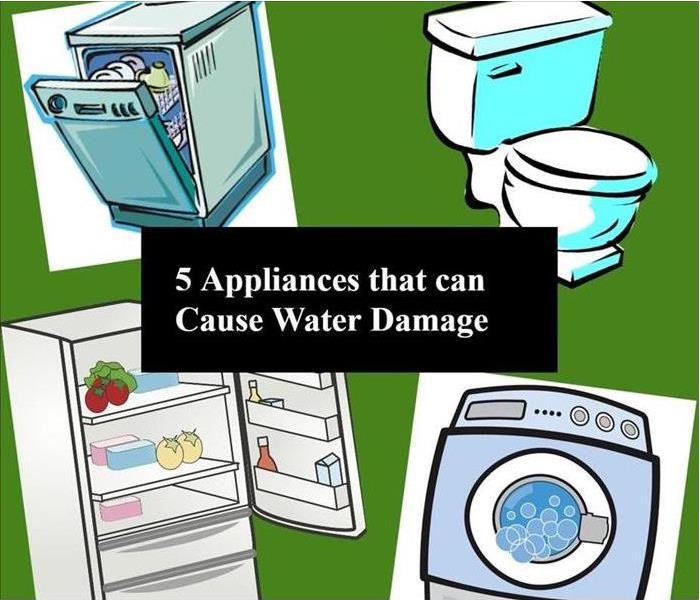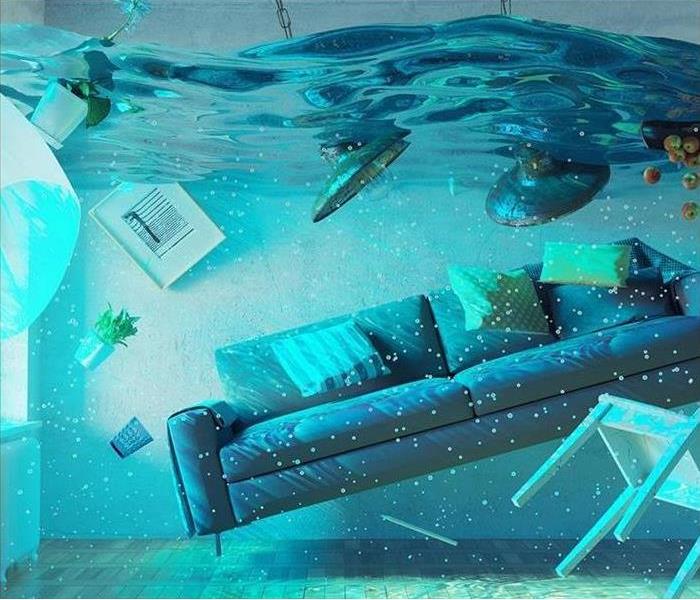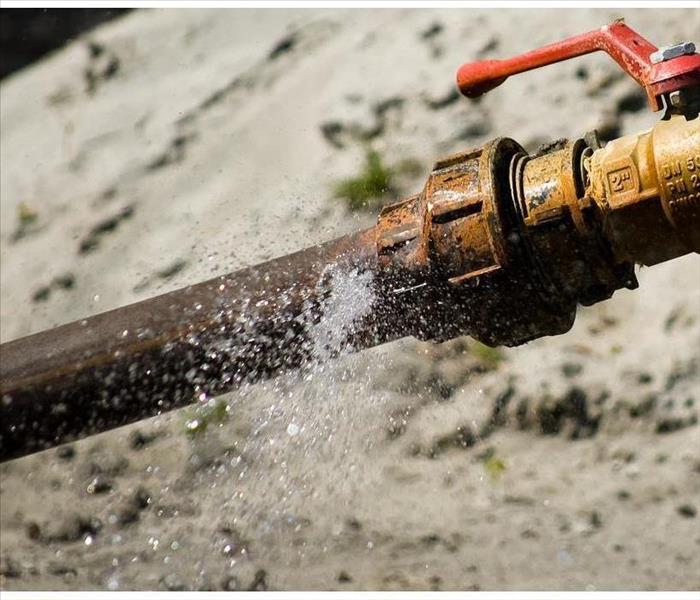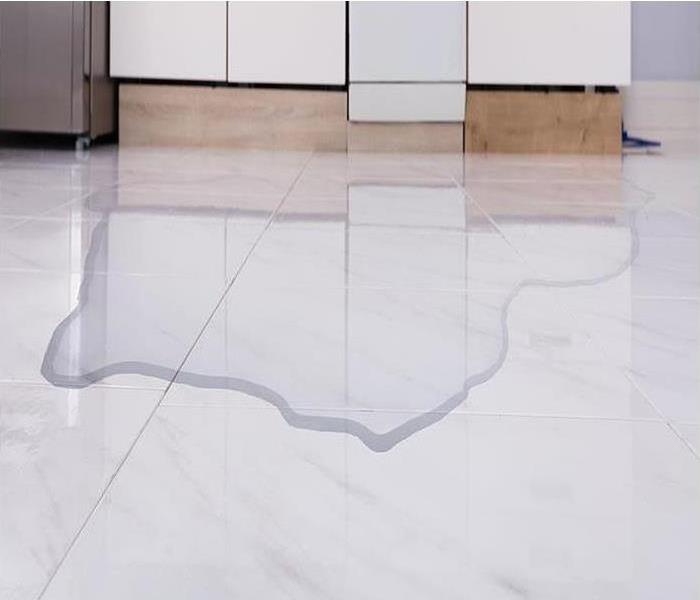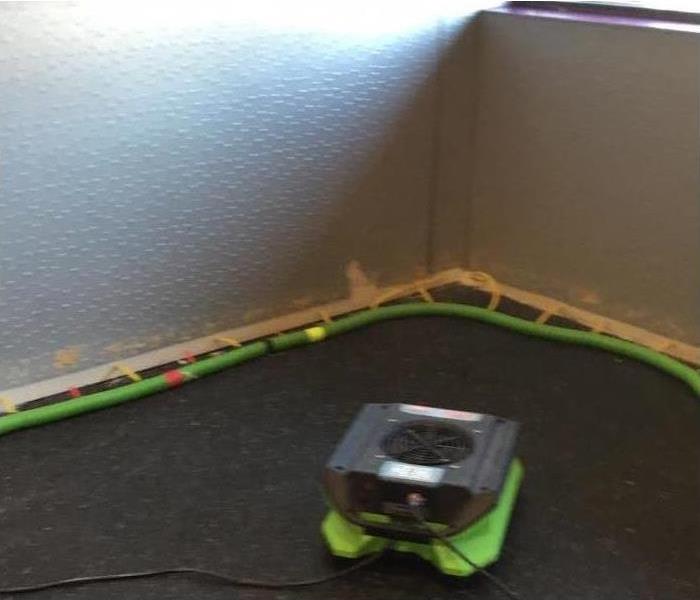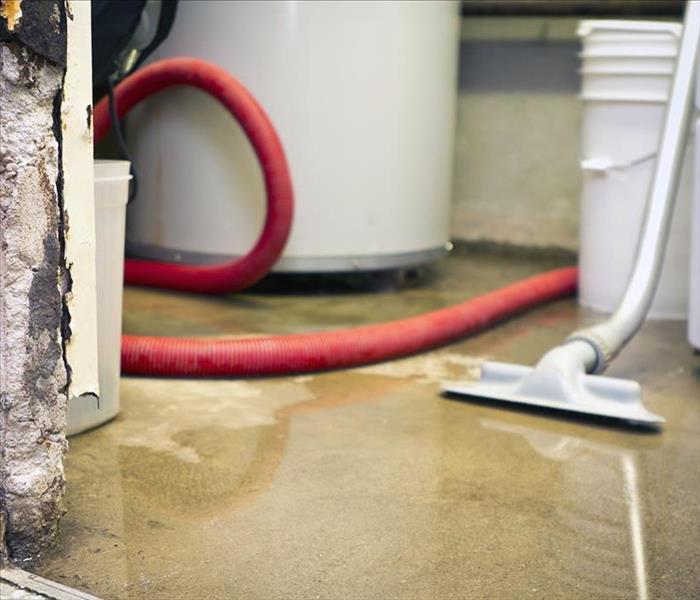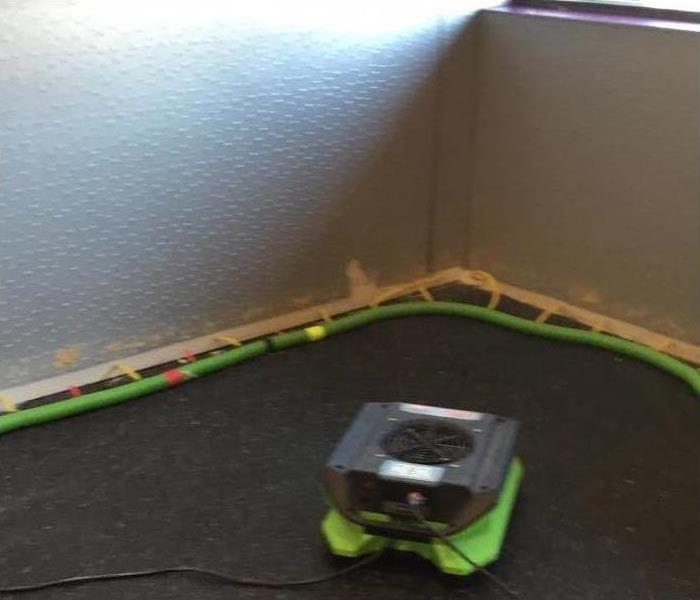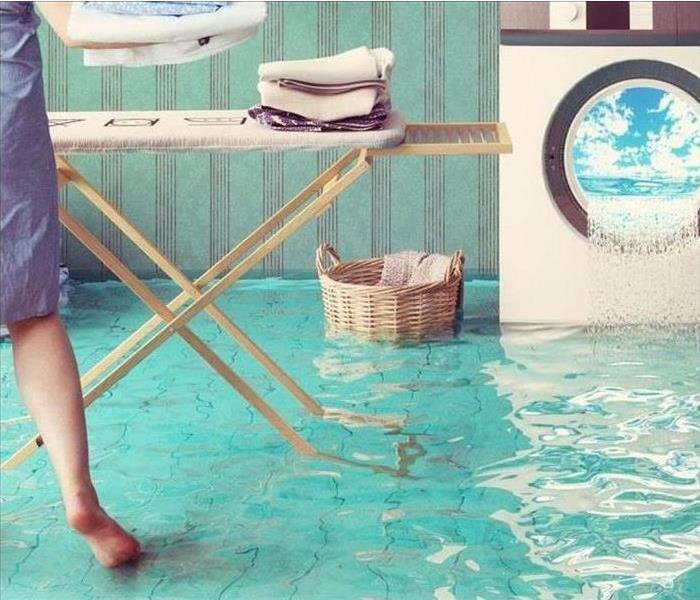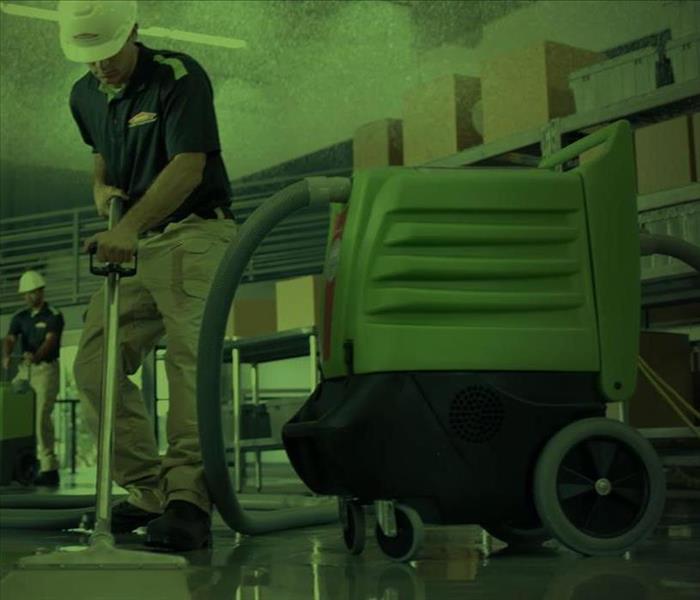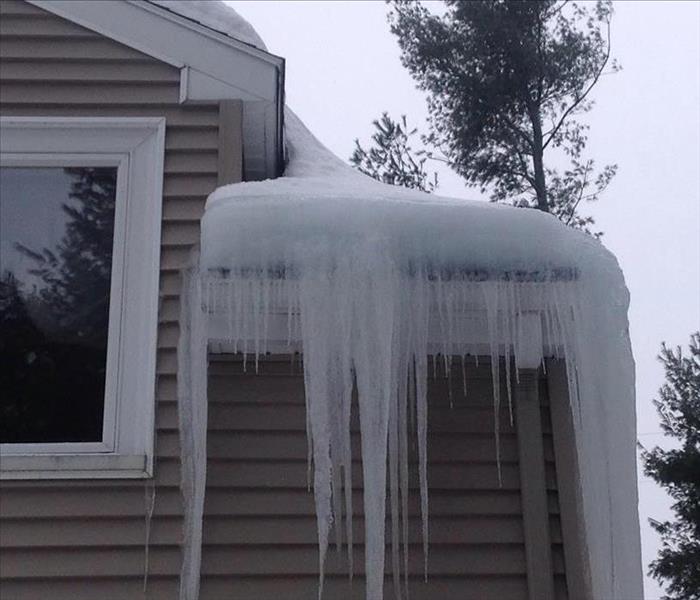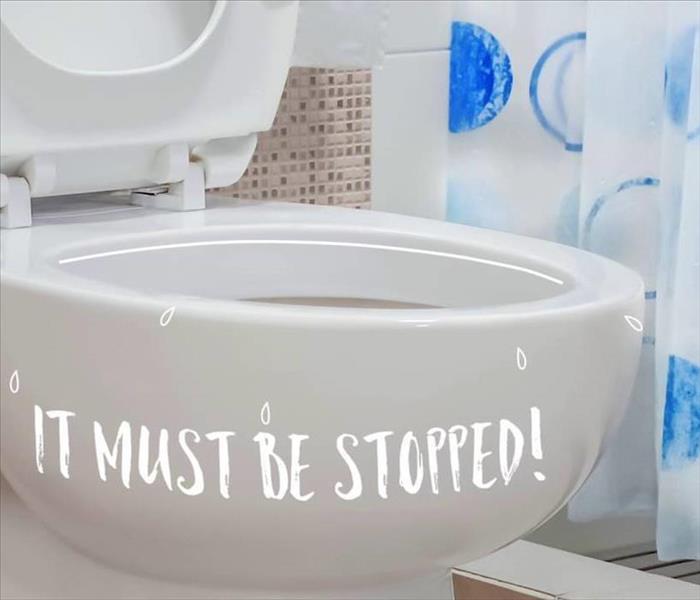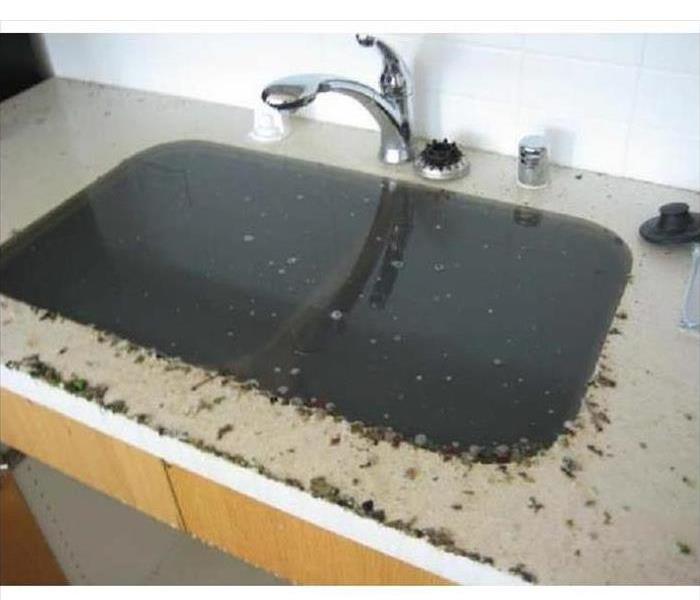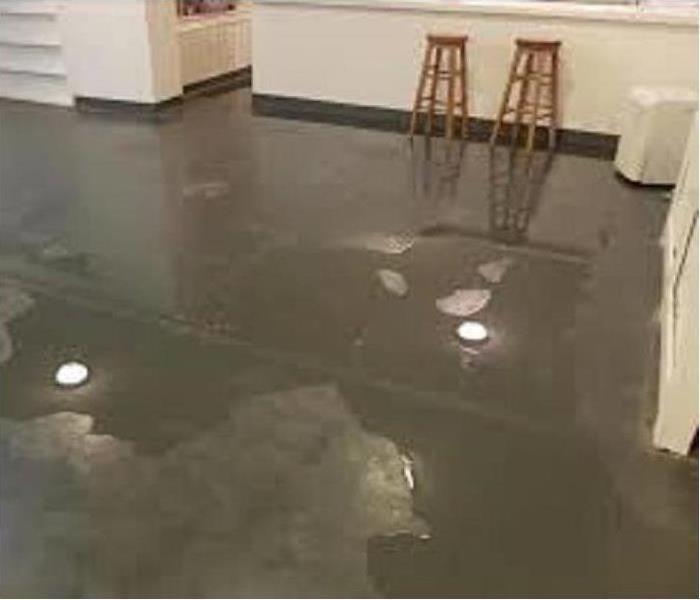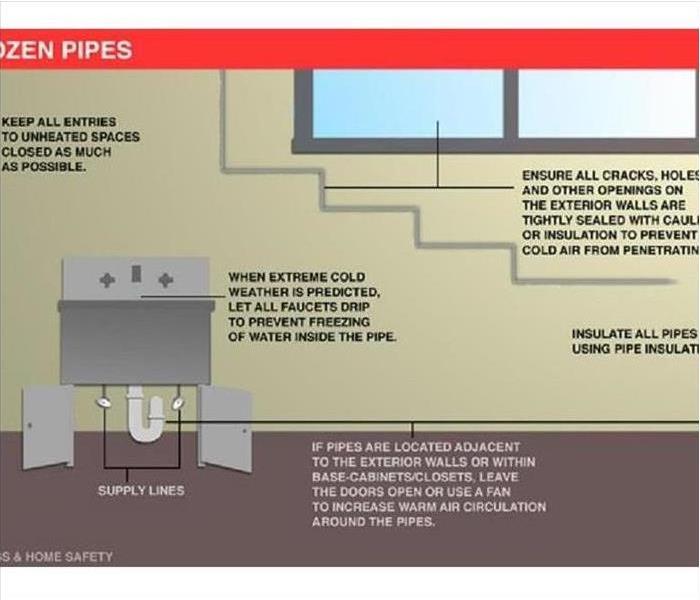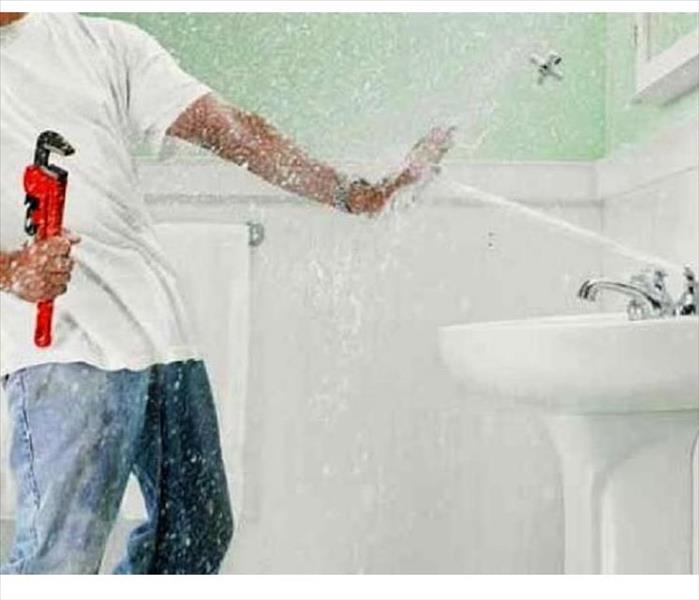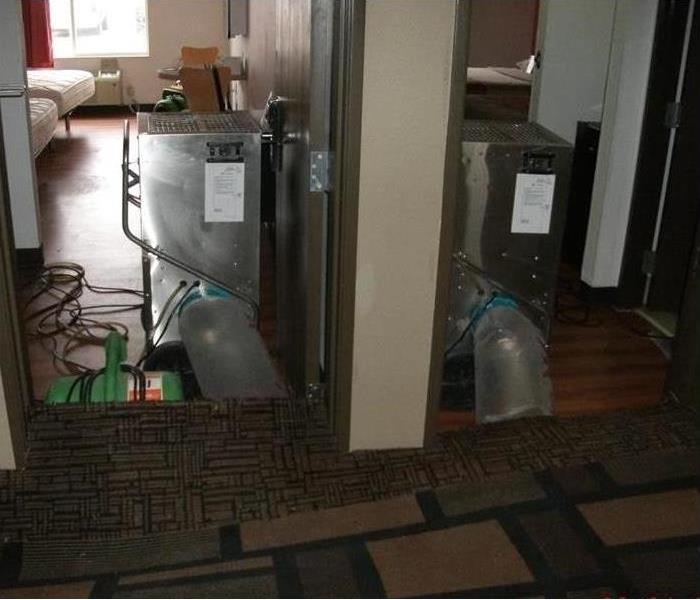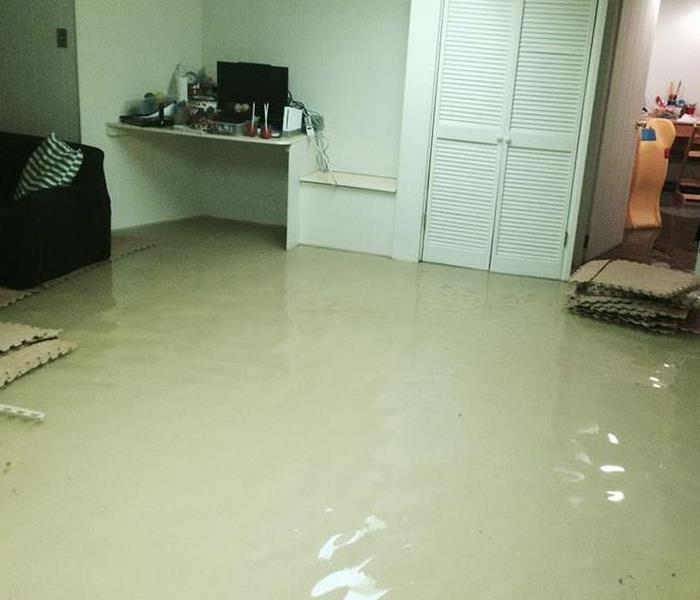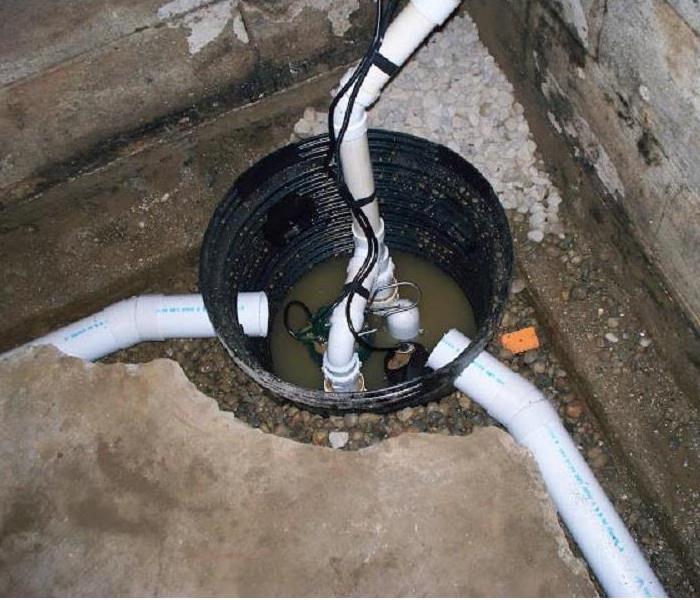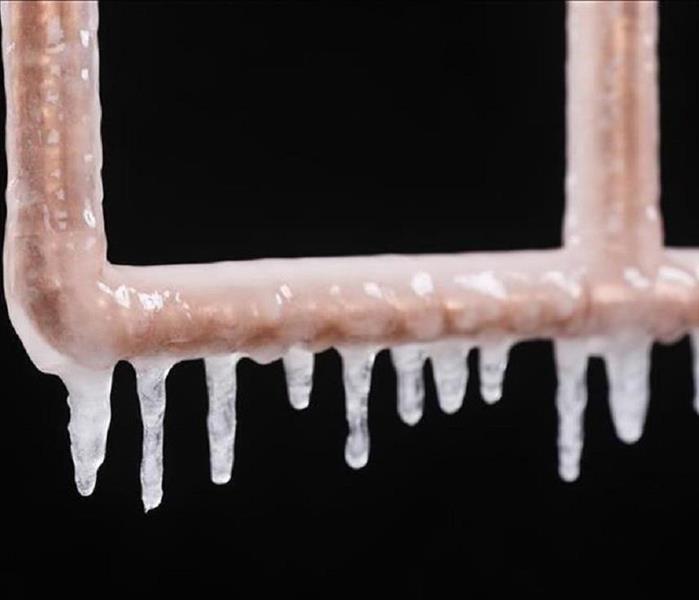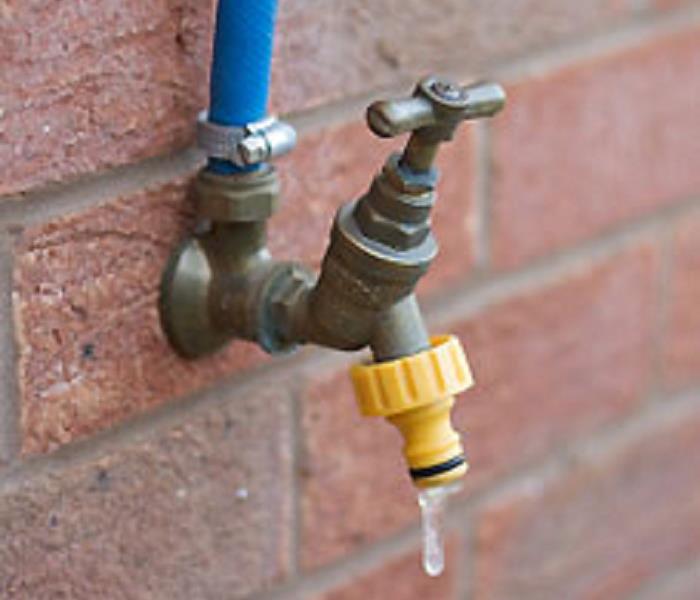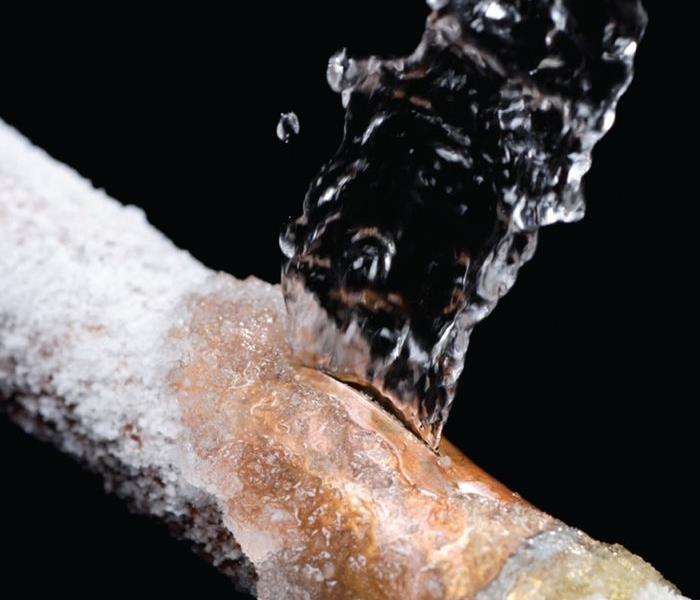Archived Water Damage Blog Posts
Immediate Answers: Water Damage Restoration Experts in Lincoln, NE
4/1/2024 (Permalink)
Water damage can occur suddenly and disrupt your daily life, but at SERVPRO of Lincoln, serving the Lincoln, NE area, we're here to help you restore your property quickly and effectively.
- Emergency Response: Our team offers 24/7 emergency response to water damage incidents, providing prompt assistance to mitigate further damage.
- Advanced Techniques: Using state-of-the-art equipment, we extract water, dry affected areas, and prevent mold growth, ensuring thorough restoration.
- Supportive Guidance: We provide expert guidance and support throughout the restoration process, helping you navigate the challenges of water damage restoration with ease.
Don't let water damage dampen your spirits. Trust SERVPRO of Lincoln for professional water damage restoration services in Lincoln, NE.
How to Avoid Frozen Pipes
11/1/2021 (Permalink)
Once the summer temperatures fall and cooler weather settles in, there are many possible causes of water damage for business owners to consider. One of the most important situations to avoid is the damage that happens after freezing temperatures lead to broken pipes.
Prevent Frozen Pipes
Before jumping into the steps to take after the damage has happened, consider some steps you can take to protect your pipes and, hopefully, prevent them from breaking:
Identify areas of possible weakness, such as pipes that are exposed to the weather, pipes in unheated parts of the building, and unprotected pipes along exterior walls.
Drain water from hoses and pipes that won't be used during cold weather, such as the sprinkler system.
Remove exterior hoses and store them inside. Drain hoses and pipes before storing them for the winter.
Add insulation to exterior walls, basements, and other cold rooms in the building.
Consider products such as pipe sleeves and insulated covers. These protective covers could provide just enough warmth to keep water running when it's needed.
Remember that water expands when it freezes, so when the water in a pipe becomes cold enough to freeze, there's a lot of pressure from the inside of the pipe. The steps you can take to prevent broken pipes are effective ways to avoid a lot of water damage.
Keep Your Pipes Warm During the Winter
There are several other steps you can take to protect your commercial property in the Lincoln, NE ara. These include setting your nighttime thermostat to a temperature above freezing, letting a small amount of cold water drip from the faucets during very cold weather, and opening cabinet doors to allow heated air to flow freely around the pipes. If your business is going to close for several days or longer, turn off the water to the building. Otherwise, you may return to serious flooding and the need for expensive water cleanup.
Respond to Frozen Pipes
Sometimes, in spite of your efforts, the pipes may still freeze. Even if there's no obvious damage, you may find that just a small trickle is all you're getting from the faucet. This is a clear sign that the pipes are frozen:
Leave the faucet open and begin looking for the section that's frozen.
Use a space heater, electric heating pad, or another gentle source of heat to treat the frozen section of the pipe. You could also warm up some towels to wrap around the pipes. As you slowly thaw the ice inside the pipes, you'll see a stronger flow of water from the faucet. Don't ever use any open flame, blowtorch, or propane heater to warm up the pipes.
Continue applying gentle heat until you have full water pressure from the faucet.
If you have one frozen pipe, there's a good chance that there are other clogged areas in the pipes. Test all of the faucets on your property.
If a burst pipe has caused serious water damage, contact local cleanup and reconstruction professionals. The sooner you respond to flooding and damage, the better you can avoid further expense and inconvenience.
Water in a Light Fixture?
11/1/2021 (Permalink)
A flood from a busted pipe or supply line leak can affect more than just the surrounding area. This is particularly common when the faulty water source is on the second story of your home in the Lincoln, NE area. Not only can it cause water damage to the flooring and walls around it but also to the ceiling under it. Here are a few tips for getting the water out of the light fixture on your lower floor effectively and efficiently.
2 Tips To Deal With Water in a Light Fixture
1. Stay Safe
Your gut reaction may be to open up the fixture and just let the water drain out. This is not advisable until you have taken the necessary safety precautions:
- Shut off water to stop flooding.
- Flip breaker to cut power.
- Don rubber gloves and boots to neutralize residual charge.
Draining the fixture is one of the first steps toward taking care of the water damage to your lower floor. If you choose to touch the light before the restoration team arrives, make sure you are doing it safely.
2. Call Professionals
If the leak in your home has flooded two floors, you need water damage repair that goes beyond amateur abilities. When water has made its way into a light fixture on a lower level, you probably have quite a bit of ceiling damage on top of everything that needs mitigation on the higher floor. You need a team that has the experience and expertise to address the whole problem. As soon as you know there is an issue, call local water restoration specialists. They can assess the problem, propose solutions and provide an estimate of how much time and money it will probably take to fix it.
Water damage doesn't always stick to one area of your home. The more water involved, the farther and faster it can spread. It may even flood a lower floor, including the ceiling and light fixtures. Use the appropriate safety precautions and call for the help you need.
Stopping a Water Leak Before it Becomes a Problem
10/4/2021 (Permalink)
A water leak in your business should never be ignored. Whether from a plumbing leak, an appliance malfunction, or a leaky roof or windows, even a small amount of excess water can lead to significant water damage repair costs. That’s why it’s important to identify leaks and take quick action to correct them. Use the following tips from SERVPRO to stop small leaks from becoming a big problem.
HOW TO SPOT SIGNS OF A PLUMBING OR ROOF LEAK
Water can get into your building in a variety of ways, and two of the main culprits are roof leaks and plumbing leaks. One of the tell-tale signs of a leak in your plumbing system is an unexpected increase in your water bill. If your water bill seems high, inspect your building for the following:
- Leaking pipe joints or P-traps underneath sinks.
- Leaks around appliances that use water.
- Corrosion on supply lines to appliances and fixtures.
- Stains below supply line connections.
- Broken toilet tank flappers.
- Odd smells coming from drains, which may indicate a sewer leak.
- Warped or discolored flooring.
- Water stains on the walls and ceilings directly below bathrooms.
Water stains on walls and ceilings can also be indicators of a roof leak. Other signs of water damage can include a musty smell in the attic, peeling paint around skylights, deteriorating drywall, missing or damaged shingles, and damaged flashing.
WHAT TO DO IF YOU FIND SIGNS OF WATER DAMAGE
Some leaks are, thankfully, fairly easy to fix. A leaky toilet may just require a new flapper valve, while a leaky faucet could need a new O-ring. If the leak requires more than a simple fix, however, call in a professional to address the issue and keep your water damage repair costs to a minimum.
In the event of a plumbing or appliance leak, you can mitigate the damage while you wait for the professionals to arrive. Start by shutting off the local water supply at the site of the leak. Here are the usual shut-off valve locations for some common fixtures and appliances:
- Sink: Just below the sink, next to the water supply lines. Sinks will typically have two shut-off valves, one for hot water and one for cold water.
- Dishwasher: Also under the sink, likely close to the sink shut-off valves.
- Toilet: Close to the toilet and near the floor, as part of the water supply line.
- Refrigerator with water and ice dispensers: On the supply tube running to the refrigerator, likely behind the refrigerator or under a nearby sink.
You can also lessen the potential for long-term damage by mopping or soaking up any standing water in the area of the leak. Keep in mind, however, that where there’s a water leak there’s often mold growth, so if you discover a mold outbreak it’s best to leave cleaning and remediation up to the experts. A professional water damage cleanup service like SERVPRO will know exactly how to address the problem before it gets worse.
Even seemingly insignificant water leaks can be signs of a larger issue. Don't let these problems continue unaddressed. Take steps to identify and stop water leaks at your place of business, and then contact the remediation experts at SERVPRO to make sure your business stays safe and clean for everyone who walks through the door.
Fixing a Running Toilet
10/4/2021 (Permalink)
You’re probably familiar with that notorious sound that emanates from a constantly running toilet. While certainly annoying, a toilet that runs continuously can also be costly in many ways. From a huge water bill to potential flooding or a damaged septic system, running toilets are often more than just a nuisance.
It’s important to know what causes a running toilet, and what you can do to fix it before it becomes a much more serious problem. Read on to find out the basics of toilets that run too frequently, and why this is one repair you definitely don’t want to put off.
What Causes a Running Toilet?
A constantly running toilet is generally an indication that one or more internal components of the toilet tank has malfunctioned. Luckily, these issues can be easy to diagnose, and fixing a toilet that runs is something you can often do yourself. Remove the lid from the tank and inspect the following:
- Fill Valve or Ballcock: Your tank will include either a cylindrical fill valve or a round ballcock that is designed to shut off water flow once the tank has filled up. If water is continuously escaping down the overflow tube, you may need to adjust the fill valve or ballcock to reduce the amount of water it allows into the tank.
- Flapper: This part creates a seal around the flush valve, through which water flows into the toilet bowl. Ensure that the flapper is not worn, chipped or hardened. Make sure the chain coming off the flapper has not gotten caught or tangled, and that it has adequate slack to allow the flapper to close automatically after the handle is released.
- Flush Valve: Like the flapper, this part can become rough or eroded over time, allowing water to slowly drain into the bowl and causing the tank to periodically refill.
- Flush Lever: This includes the toilet handle and the arm inside the tank. Make sure they are tightly secured and in good condition.
The Major Risks of Minor Leaks
Whatever the cause, it’s a good idea to fix a running toilet as soon as you’re aware of the problem. For starters, a constantly running toilet can waste a substantial amount of water, setting you up for a nasty surprise when the next water bill arrives. Beyond that, a toilet that runs all the time is at greater risk of overflowing and causing substantial flooding damage, with overflow being among the leading causes of toilet failures, according to the Insurance Institute for Business and Home Safety.
For those on septic systems, a running toilet introduces additional risks. Constant water flow can flood your septic tank and can eventually cause the drain field to saturate and fail. This can lead to health hazards as well as costly mitigation and repair efforts that, as with a flooded home, far exceed what it would have cost to repair a leaking toilet in the first place.
If you have a toilet that won’t stop running, don’t wait for the problem to get out of hand. Understanding the basics of toilet operation and what you can do to fix yours can mean the difference between an easy repair and expensive damage. If you do end up dealing with a toilet overflow and damage to your home, you can count on the experts at SERVPRO to help make it right. We’re available 24/7/365 to answer your questions and help you return to a clean, healthy home as soon as possible.
Main Water Valve Leaking?
10/4/2021 (Permalink)
As a homeowner, it's essential to know where the main water shut off valve is located. Water leaks from running toilets, burst pipes, broken water heaters, and even leaky sinks can cause significant damage in a short amount of time. In order to prevent costly damage, turn off the water supply as soon as a leak, flood, or spill occurs.
Find out how to maintain all your valves throughout the year, including the ones connected to your sinks and toilets, plus tips on when it's best to completely shut off your main water line from the experts at SERVPRO.
WHEN DO I NEED TO SHUT OFF MY MAIN WATER LINE?
Typically, you won't have to go directly to the main water line to fix a leak. Instead, your first attempt at stopping your water supply should be straight at the source. Most local supply lines have valves located directly behind or above the fixture and can be turned clockwise to shut off the water supply.
To locate water valves next to specific fixtures in your home, use these tips:
- For sinks, look under the cabinet on the supply lines leading to the faucet. There will likely be two shut-off valves to control both cold and hot water.
- For toilets, look close to the ground behind or beside the toilet, along the flexible metal tubing leading to the tank.
- For washing machines, look either directly above the washer or pull the machine away from the wall and check behind it.
- For water heaters, the water valve should be located just above the heater itself.
Operating these valves can vary depending on their design. There may be a round or oval-shaped valve handle that you turn clockwise to close, and counterclockwise to reopen. Some modern plumbing shutoff valves may feature a flat knob that you pull out in order to close. Others may look like flat levers, which you can turn perpendicular to the supply line to reach the closed position. In many cases, operating instructions may be indicated directly on the valve.
If the leaky fixture's valves aren't working or break off, turn off your main water line right away. Acting fast could save you plenty in damages and repair costs.
HOW DO I FIND MY MAIN HOUSE WATER SHUT OFF VALVE?
The main water line valve to a house is usually located in the basement or in the crawlspace and enclosed behind an access panel. However, there isn't a standard location specified in any home.
If you don't know where to look for your water shut off valve, use these tips:
- The valve will often be located on-grade, so you'll likely find it at eye-level in the basement or near the ground on the first floor.
- The valve may also be attached to the water meter outside your home. Water meters are generally located close to the street in an underground box or near your driveway, yard or sidewalk.
- Take a look at the property inspection report provided when you purchased your home. This report should note the location of the valve.
MAINTAINING YOUR WATER VALVES
At SERVPRO, we know how terrifying it can be to try shutting off your supply lines just to see the valves stick in place – or worse, snap off in your hands. That's why we recommend periodically checking your shut off valves to ensure they're in good working condition.
At least twice a year, test all the valves in your home. Simply turn them completely off and on again to ensure they aren't stuck in place or include faulty parts. That way, if an emergency ever does occur, you can have peace of mind that you'll be able to fix the problem quickly and efficiently.
Make sure every family member knows where these shutoff valves are located so that a minor water incident doesn’t result in major damage. Consider writing out instructions so everyone in the household knows how to act if they spot a leak. When you’re heading out of town, use these valves to shut off water flow so that you don’t come home to water damage or a flood.
If the unexpected happens are you aren’t able to shut off your water valves in time, call on the experts at SERVPRO. Our water damage restoration services can help you get your home back to normal as quickly as possible. With the proper tools and knowledge, we'll work fast and efficiently to prevent additional water damage, cleanup costs, and overall stress.
Catching a Running Toilet Before It Goes Too Far
10/1/2021 (Permalink)
You’re probably familiar with that notorious sound that emanates from a constantly running toilet. While certainly annoying, a toilet that runs continuously can also be costly in many ways. From a huge water bill to potential flooding or a damaged septic system, running toilets are often more than just a nuisance.
It’s important to know what causes a running toilet, and what you can do to fix it before it becomes a much more serious problem. Read on to find out the basics of toilets that run too frequently, and why this is one repair you definitely don’t want to put off.
What Causes a Running Toilet?
A constantly running toilet is generally an indication that one or more internal components of the toilet tank has malfunctioned. Luckily, these issues can be easy to diagnose, and fixing a toilet that runs is something you can often do yourself. Remove the lid from the tank and inspect the following:
- Fill Valve or Ballcock: Your tank will include either a cylindrical fill valve or a round ballcock that is designed to shut off water flow once the tank has filled up. If water is continuously escaping down the overflow tube, you may need to adjust the fill valve or ballcock to reduce the amount of water it allows into the tank.
- Flapper: This part creates a seal around the flush valve, through which water flows into the toilet bowl. Ensure that the flapper is not worn, chipped or hardened. Make sure the chain coming off the flapper has not gotten caught or tangled, and that it has adequate slack to allow the flapper to close automatically after the handle is released.
- Flush Valve: Like the flapper, this part can become rough or eroded over time, allowing water to slowly drain into the bowl and causing the tank to periodically refill.
- Flush Lever: This includes the toilet handle and the arm inside the tank. Make sure they are tightly secured and in good condition.
The Major Risks of Minor Leaks
Whatever the cause, it’s a good idea to fix a running toilet as soon as you’re aware of the problem. For starters, a constantly running toilet can waste a substantial amount of water, setting you up for a nasty surprise when the next water bill arrives. Beyond that, a toilet that runs all the time is at greater risk of overflowing and causing substantial flooding damage, with overflow being among the leading causes of toilet failures, according to the Insurance Institute for Business and Home Safety
For those on septic systems, a running toilet introduces additional risks. Constant water flow can flood your septic tank and can eventually cause the drain field to saturate and fail. This can lead to health hazards as well as costly mitigation and repair efforts that, as with a flooded home, far exceed what it would have cost to repair a leaking toilet in the first place.
24 Hour Emergency Services
7/6/2021 (Permalink)
SERVPRO of Lincoln is available 24 hours a day 7 days a week. Large or small loss, whenever you are dealing with water damage immediate action is crucial. A delay of just a few hours can greatly increase the severity of the damage.
We Answer the Phone Ready to Help Call Today at 402-466-4004
We understand that when you call us, you may be feeling confused, stressed and vulnerable. You need an expert to guide you through this crisis. SERVPRO of Lincoln has the specific water damage training and experience to help you through this tough time.
What to Expect:
We will ask several questions regarding your water damage emergency. These questions will help us better assist you and determine what equipment and resources to take with us.
Our SERVPRO Representative will ask:
- Your name and contact info
- your insurance information (if applicable)
- The street address of the damage home or business
- When did it occur?
- What caused the damage?
- Is there electricity available?
SERVPRO of Lincoln specializes in the cleanup and restoration of residential and commercial property after a water, fire or smoke damage event. Our staff is highly trained in property damage restoration.
3 Tips To Avoid Freezing Pipes and Water Damage
2/8/2021 (Permalink)
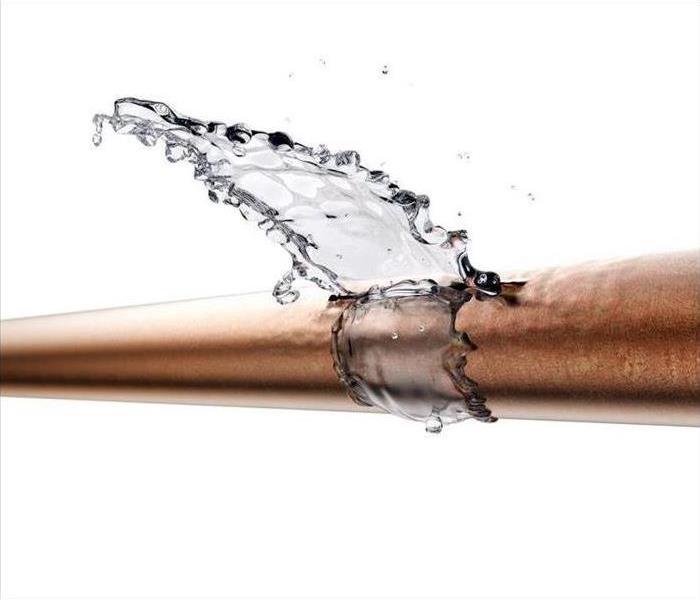 A burst pipe leads to water damage
A burst pipe leads to water damage
3 Tips To Avoid Freezing Pipes and Water Damage
1. Prevention
The best way to avoid extensive water damage from frozen pipes is to prevent the issue from happening in the first place. There are a few places in your home where your pipes are the most vulnerable to freezing:
- Right inside exterior walls
- Connected to exterior faucets
- Inside closed cabinets
- In unheated areas such as attics and crawl spaces
There are several things you can do to prevent pipes from freezing. Insulate your pipes, particularly the ones that are near exterior walls or in spaces cut off from the central heating in your living spaces. You can apply electrical heating tape to pipes as well. Be sure to keep your heater on, even when you are not at home, if temperatures outside are below freezing. During the coldest parts of the day, it's a good idea to open your cabinet doors or allow your water faucets to drip for reliable pipe freeze prevention.
2. Detection
If you can catch a frozen pipe before it bursts, you may be able to save the pipe and the area around it from damage. A telltale sign that you have a frozen pipe is a significantly smaller flow when you turn on a faucet. Turn the faucet off, locate the pipe and slowly warm it up, allowing the ice inside to melt. The faucet should then flow normally again.
3. Solution
A burst pipe leads to water damage that can only be properly repaired by water mitigation experts. The technicians must tear out all ruined materials and rebuild the area affected by the flooding. If your insurance doesn't cover the cost, you may be looking at a lot of out-of-pocket expenses.
These pipe freeze prevention tips can protect your home from water damage. Make pipe protection part of your regular winter maintenance plan.
5 Household Appliances that Can Cause Water Damage
1/5/2021 (Permalink)
When thinking about areas in your home that are prone to water damage, you should think about these 5 appliances that can cause the most leaks in your home.
1.Refrigerator- In terms of leaking coming from a refrigerator, there are two likely culprits. The first being a blocked defrost drain. This drain can be blocked with food particles or other debris and can eventually lead to water leaking from the refrigerator. Make sure to check this area of the refrigerator if you are experiencing a leak. Also, the water supply line that feeds water to your ice machine could leak. Make sure to check connections.
2.Dishwasher- Another appliance that is prone to leaks is a dishwasher. While there are many different mechanical problems that could cause leaks, like a faulty float switch or a clogged drain, a common leak from a dishwasher is when the wrong detergent or too much detergent is used.
3.Washing Machine- Washing machines have many things that could cause leaks. If you notice a leak coming from your washing machine, make sure to check all connections (inlet and hose) and also the floor drain, which could be clogged. Check your owners manual, unplug the washing machine and turn off the water main. Troubleshoot all possible areas where the leak could be coming from.
4. Water Heaters- The main leaks relating to water heaters are due to a malfunctioning temperature and pressure relief valve, a leaky plumbing connection or corrosion in the water tank itself. You can test the valve by flushing water through to clear any debris. If corrosion is the problem, you will need to replace the water heater.
5.Toilets- Toilets overflow because they have clogged drain or because the float is malfunctioning, which allows too much water into the tank. If plunging doesn’t solve the problem, the problem may be in the pipes outside, which would require a professional plumber.
If you have experienced water damage in your home, please contact SERVPRO of Lincoln at 1-402-466-4004.
Even a little water can make a big mess
11/2/2020 (Permalink)
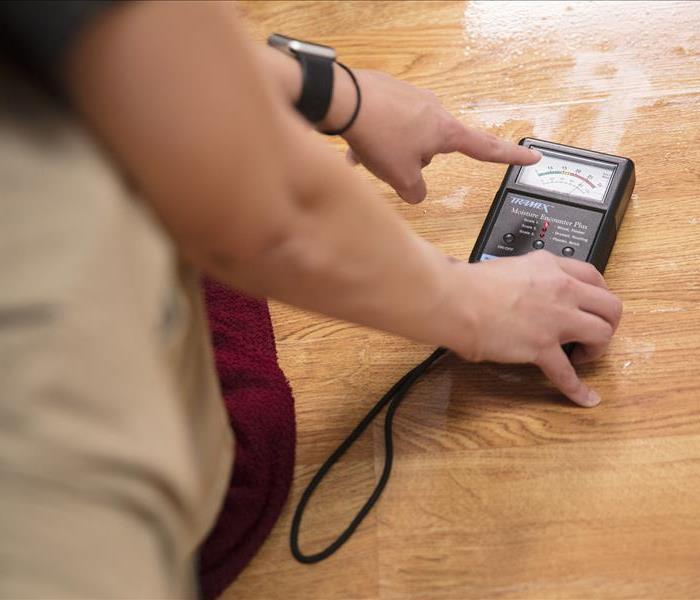 Checking water damaged flooring
Checking water damaged flooring
Any amount of unexpected water can cause a lot of damage, fast. We get calls from customers who have had water damage in their home or office all the time, often we are told the water has only affected a small area. But more often than not, that is not the case it is just the only water damage that is easily visible. Water runs across and down easily, it does not stay put in one area where a water loss has occurred.
We’re ready to deal with your water damage emergency day or night. When water causes damages in your home or office we are ready 24 hours a day, 365 days a year to help you. Not only are we ready to help, but we are also ready to answer your call.
SERVPRO® of Lincoln specializes in the cleanup and restoration of residential and commercial property after a fire, smoke or water damage event. We can handle any size disaster!
Call SERVPRO of Lincoln at 402-466-4004.
Flooding 101
11/2/2020 (Permalink)
Flooding can occur at any time of the year. We here at SERVPRO have a close relationship with that liquid sunshine we call rain. Even though it is a common sight for us it is important that we know common weather terms and what we need to do when we hear them.
For instance, do you know the difference between a “Flood Warning” and a “Flood Watch”? Although the two terms sound very similar they are different and need to elicit a different response. A
- Flood Warning means that flooding will occur soon if it has not already. You need to move to higher ground or evacuate the area immediately.
- Flood Watch means that flooding is possible. You need to listen to local radio or TV news stations and weather centers for more information. A Flood Watch can become a Flood Warning.
SERVPRO of Lincoln specializes in the cleanup and restoration of residential and commercial property after a fire, smoke or water damage event. We can handle any size disaster!
Call SERVPRO of Lincoln at (402)-466-4004
Recovering From A Water Damage
10/26/2020 (Permalink)
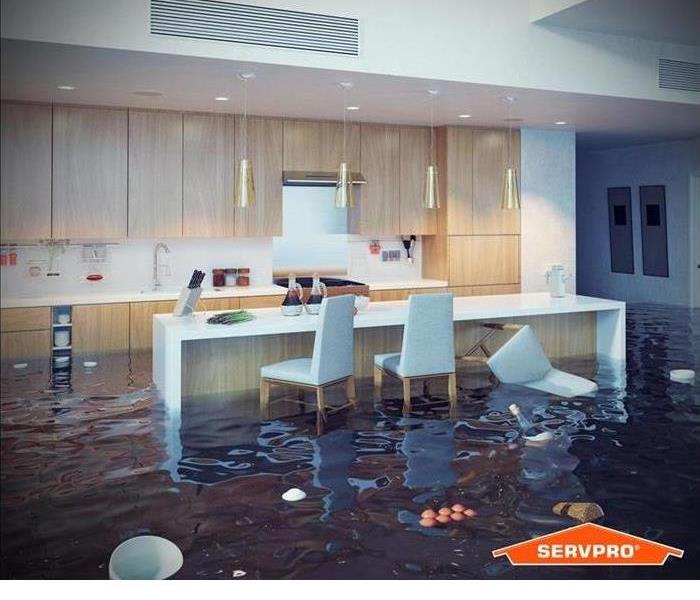 Flooded Kitchen
Flooded Kitchen
When it comes to water damage in the U.S., almost 40% of homes have incurred losses due to this type of occurrence. Most of these problems are caused by a neglected or damaged roofs, old or faulty plumbing, broken washers and water heaters. Natural disasters such a flood events or hurricanes also ruin homes and businesses with their destructive forces.
During a water damage disaster, many homeowners and businesses feel hopeless, especially if most of the structure is still under water. The situation may appear bleak, but in most cases, there is a great chance of recovering your home or business from water damage quickly. The first step is not to panic. Keep calm and figure out where to begin. This is where an Emergency Plan should be considered before an event like this strikes.
Think Safety
The number one priority should be the safety of you and your family. If there is standing water, begin by switching off electrical power to the entire house or the flooded area. Live electricity and water are a lethal combination. Secondly, shut off the main water inlet valve to prevent any possibility of contaminating the water system. In a large flood, you may also need to cut off the gas supply also. Identify and dispose of any damaged food; this will prevent food poisoning by accidental consumption. Don’t wade through a flooded floor without proper protection, especially in murky water. Sharp objects may be lurking at the bottom of the water. Wear sturdy waterproof boots when walking in a flooded area.
Remove The Moisture
The next step is to get rid of the moisture. In a heavy flooding situation, wait till the floods dissipate before you can start drying out your house. if environment is safe to do so, use electric, gas or hand trash pumps to remove water. Locate the lowest part of the flooded floor and place the pumps there. Be careful with electric-powered pumps to avoid electric shock. You could dump the excess water into the sewage system, a tanker truck, or the backyard where it won’t cause any harm. After all the water is out, circulate dry air within the house. Open up windows and doors to let in the fresh air. If it’s safe to use the mains system, install electric fans to blow air to specific areas. Even better, if the heating system is still usable, power it up to warm the house and drive moisture away. Drying out the house can reduce mold from growing.
Pick Up Debris
Clear out any debris brought in by the water. Flood water is especially messy; there may be sediments, leaves, tree branches and even garbage. Identify anything that can be salvaged. This could be your precious heirlooms, rugs, furniture or drapes. Any salvageable belongings should be kept in a separate dry room if possible, or away from the house altogether. Anything that is severely damaged should be disposed of and documented for insurance purposes. Clear out as much debris as possible to reveal the extent of the water damage.
Assess Water Damage
With everything out of the way and visible, you can now assess the level of damage sustained. You may need to call in an inspector with an eye for details to examine the property in its entirety. Check for damage or mold on the floor, walls and plumbing system. Get a clear picture of the extent of damage, what needs to be done to repair the damages. This may be the time to call SERVPRO of Lincoln to put together a restoration protocol to put your Lincoln home back to its prelists condition.
Call Your Insurance Carrier
After a detailed assessment of the damage, call your insurance agent or carrier to find out how much of the damage they will cover. Your insurer will probably send a claims adjuster who will document all the steps you have taken so far and the valuation of damages. According to your insurance policy, the insurer could chip in a large part of the repair and restoration costs. Contact other insurers covering assets like your car or other valuables damaged along with the house.
Repairing Your Property
Now its time to begin repairs on your home. If only some rooms of the house are damaged, your family could still live in the safe parts of the house. However, if the house needs extensive repairs, you may have to find a temporal shelter. SERVPRO of Lincoln can carry out all the necessary repairs to your home or business from emergency mitigation and building stabilization to complete reconstruction of your property. Most water damage repairs include floor, walls and doors repairs or replacements. Check with the authorities whether certain repairs are allowed or require a city permit, SERVPRO can provide this for you also. The restoration period depends on the extent of the damage. Floor work usually takes a lot of time, so make sure you are prepared for that. After the repairs, make a few touch ups like paint jobs and restoring any peripheral systems such as plumbing and electrical systems in case they were damaged as well. Again, SERVPRO can provide all these different services to you since we are a "Full Service" contractor.
Ready To Move Back
After all the repairs are done, the house is finally back to its preloss condition, its now time to move back in. Bring in your furniture and belongings and prepare for things to go back to normal "Like it never even happened."
If you have had the misfortune of water damage striking, relax and follow a these steps for a speedy recovery.
Drying Hardwood
10/6/2020 (Permalink)
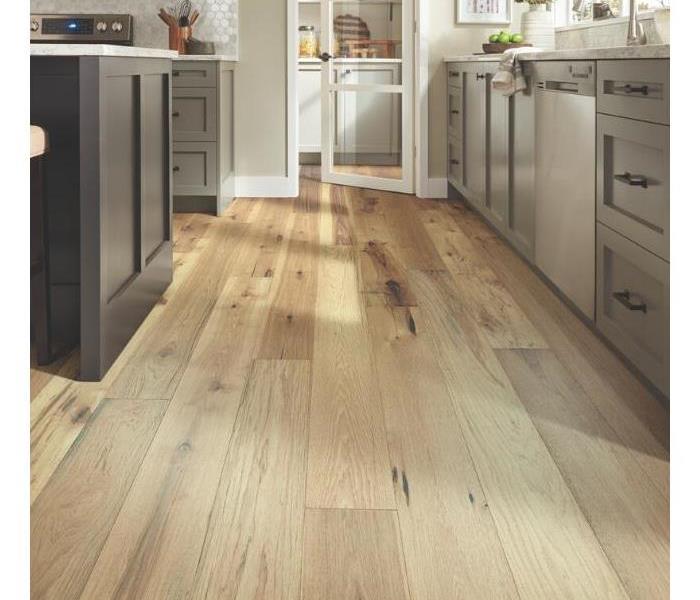 Try & Save Your Hardwood Floors!
Try & Save Your Hardwood Floors!
Drying Hardwood
There’s a misconception that when hardwood flooring gets wet, it must be removed because it’s ruined. Frequently, that’s not the case. SERVPRO has the tools and training to evaluate and dry out hardwood flooring. We use specialized drying mat systems and balanced dehumidification to dry hardwood quickly, saving you the time and expense of flooring replacement. When evaluating water-damaged hardwood flooring, the length of time it has been wet is a critical factor. If the flooring is allowed to dwell in water for too long, it is possible for the boards to cup, warp, and possibly break. Rapid response is critical to success in saving hardwood.
When we respond to a water damage with affected hardwood flooring, we perform a preliminary inspection. What areas are wet? How long have they been wet? And specifically how wet is it? We use a combination of flooring extraction mats, and a powerful truck-mounted extraction unit to pull as much free water out of the flooring system as possible. After that’s done, we set up our drying equipment, and start the drying process. We return to the site daily to monitor the progress of the drying, using meters specially-designed for hardwood. Once the moisture level in the wood reaches an acceptable level, the hardwood flooring can be inspected by a flooring contractor.
What to do when a pipe breaks.
7/3/2020 (Permalink)
Cold winter weather can be hard on overexposed pipes. Water expands when it freezes, which can increase the pressure in pipes and cause them to burst. If a pipe bursts on your property, you'll want to act fast to prevent as much damage as you can.
1.) Turn off your water main.
The first thing that you should do if a pipe bursts is turn off your water main. This will turn off your water supply for the whole house, which will stop the pipe from causing any more water damage.
2.) Drain your faucets and toilets.
Once the water main is turned off, you should run your faucets to flush out any remaining water. Additionally, you should flush your toilets until the excess water is gone too. This will aid in relieving any pressure from your pipes to minimize any more damage.
3.) Turn off your heating system.
You will want to also turn off your heating system and drain the water from all of your hot water taps.
4.) Take pictures of any water damage.
At this point, all of your water should be shut off and drained. This will keep any further damage from occurring. You'll want to take as many pictures as you can of any damaged interior or items as you
5.) Clean up as much water as you can.
Dry up as much water as you can to prevent any further damage. Moist environments promote mold growth, so you'll want to be sure to eliminate any wet surfaces if possible. However, if the water is contaminated, you'll want to wait for a professional to professional (this can be a health hazard).
SERVPRO of Lincoln specializes in the cleanup and restoration of residential and commercial property after a fire, smoke or water damage event. We can handle any size disaster!
Call us at 402.466.4004
The Importance of Performing Water Cleanup Speedily
2/4/2020 (Permalink)
Water problems are a nightmare for property owners, especially when vast volumes of water are involved. A washing machine leak or a burst pipe can cause water to pool in your home and damage the contents and structures in its path. Dealing with a water loss incident can be time-consuming and costly.
The sooner you perform water cleanup in your residence, the higher the chance of restoring it cost-effectively. You can seek help from SERVPRO to clean up and dry your home quickly. One component that water can ruin is furniture. It can cause the furniture to weaken or act as a food source for mold. Some types of furniture are sensitive to water and can turn white shortly after coming into contact with it. Other furniture can swell or become discolored after prolonged exposure to water.
If the water has saturated your carpet floor, removing it is more difficult because of the fabric composition. The carpet can become discolored depending on the material used to make it. Removing water from carpets requires the use of appropriate cleaning equipment and cleaning methods to prevent damage.
After a water intrusion incident, the walls can also sustain damage. Water-soaked walls tend to become discolored. Yellow spots can appear on white-colored walls after some time. When drying walls, one of the impediments restorers face is a water barrier. This barrier is a material that prevents moisture from evaporating from walls. We can remove the outer vapor barrier or perforate gloss paint to speed up the drying process.
SERVPRO of Lincoln specializes in the cleanup and restoration of residential and commercial property after a fire, smoke or water damage event. We can handle any size disaster!
Call us at (402) 466-4004
The Science of Drying
1/14/2020 (Permalink)
Did you know, there is actually a science behind the process of drying? The knowledge of psychometrics is essential to restoring a water damaged structure to its preloss condition. While your initial reaction may be to grab a few towels to mop up the mess and place a fan or two around the damaged area, SERVPRO of Lincoln is trained in the science of drying and follow strict industry-approved standards to help lower the chances of any secondary damages. If your business suffers water damage we are here for you. We are dedicated to helping our customers when disaster strikes and helping to make it “Like it never even happened.”
SERVPRO of Lincoln specializes in the cleanup and restoration of residential and commercial property after a fire, smoke or water damage event. We can handle any size disaster!
Call us at 402.466.4004
When your property is affected.
11/18/2019 (Permalink)
After a disaster like a fire or a flood from a cooking fire or washing machine overflow you may not know what comes next after you have called for the initial clean up to start. One area that is often overlooked is your possessions or your contents after they have been inventoried they are packed out and stored in our secure, climate-controlled warehouse. We pack out the area that was effected, take it to our cleaning area, and then return it to the same place we took it from. We use a system of pictures and numbers to make sure your house is put back together “Like it never even happened."
SERVPRO of Lincoln specializes in the cleanup and restoration of residential and commercial property after a fire, smoke or water damage event. We can handle any size disaster!
Call us at (402) 466-4004
Theres a sciance to drying.
11/18/2019 (Permalink)
Did you know, there is actually a science behind the process of drying? The knowledge of psychometrics is essential to restoring a water damaged structure to its preloss condition. While your initial reaction may be to grab a few towels to mop up the mess and place a fan or two around the damaged area, SERVPRO of Sooland are trained in the science of drying and follow strict industry-approved standards to help lower the chances of any secondary damages. If your business suffers water damage we are here for you. We are dedicated to helping our customers when disaster strikes and helping to make it “Like it never even happened.”
SERVPRO of Lincoln specializes in the cleanup and restoration of residential and commercial property after a fire, smoke or water damage event. We can handle any size disaster!
Call us at (402) 466-4004
When you have Water in Your Home
10/28/2019 (Permalink)
Water damage can happen anytime and anywhere from things like dishwasher leaks or toilet clogs or wax ring failures on toilets. SERVPRO of Sooland is here to help when disaster strikes. We walk through the disaster with you, helping you to understand the sometimes complicated claims process and how to best advocate for yourself and your home, as well as the time line for when you can expect everything to be complete. After all your home is probably the biggest investment you have ever made, it is not just a collection of rooms and things, it is your home.
SERVPRO of Lincoln specializes in the cleanup and restoration of residential and commercial property after a fire, smoke or water damage event. We can handle any size disaster!
Call SERVPRO of Lincoln (402) 466-4004
How to Handle a Water Loss
7/27/2019 (Permalink)
Water damage can affect not only the structure of your house but also your belongings. SERVPRO of Lincoln understands that your home is more than a structure. Your furniture, clothing, keepsakes, and other belongings are important to you. We provide the following services to help restore and protect your belongings while we are restoring your home.
Contents Restoration
SERVPRO of Lincoln specializes in restoring contents damaged by water. We pretest your contents to determine what items can be restored back to their condition before the water damage. We utilize several methods of cleaning your contents, including:
- Dry Cleaning - Used for cleaning light residues or to pre-clean prior to wet cleaning.
- Wet Cleaning - An effective cleaning method for removing moderate to heavy residues.
- Spray and Wipe - Effective for items that can’t withstand wet cleaning.
- Foam Cleaning - Used for upholstery fabrics that might shrink or bleed if wet cleaned.
- Abrasive Cleaning - Involves agitation of the surface being cleaned.
- Immersion Cleaning - Contents are dipped into a bath of the cleaning product.
Move-Outs/Pack-Outs
If your home requires extensive restoration, SERVPRO of Lincoln can conduct an organized, efficient move-out of the affected area. A move-out will provide several benefits, including the following:
- A quicker remodeling process
- Protecting items from potential damage
- Protecting contents from further on-site damage
When restoration is completed, we will work with you to coordinate the move-in according to your needs.
On-Site Storage
We have in-house storage where we can keep your belongings safe from further damage, and can provide cleaning and restoration services for your belongings. We have a warehouse dedicated to storage where we can keep your items safe and secure.
SERVPRO of Lincoln specializes in the cleanup and restoration of residential and commercial property after a fire, smoke or water damage event. We can handle any size disaster!
Call us at (402) 466-4004
Winter Water
2/5/2019 (Permalink)
Winter can be freezing and snowy, more often than not it’s just rainy. But that does not mean that winter weather can’t still take a toll on your home and property. We at SERVPRO of Lincoln want to make sure you know the correct steps to take to prevent damages to your home and more importantly disruptions to your life. Ensure gutters are clean & secure, leaves & debris that accumulate damage gutters and can lead to roof problems & water damage. If winter and cold weather take their toll on your home, make sure to call the team with the knowledge and experience to make it “Like it never even happened.”
SERVPRO of Lincoln specializes in the cleanup and restoration of residential and commercial property after a fire, smoke or water damage event. We can handle any size disaster!
Call us at (402) 466-4004
Toilet leak in Lincoln
1/22/2019 (Permalink)
Water damage can happen anytime and anywhere from things like dishwasher leaks or toilet clogs or wax ring failures on toilets. Sometimes you are not even aware of a leak inside a wall or in your crawlspace until there is a musty smell or discoloration on sheetrock. We walk through the disaster with you, helping you to understand the sometimes complicated claims process and how to best advocate for yourself and your home. After all your house is probably the biggest investment you have ever made, it is not just a collection of rooms and things, it is your home; and we take care of it as if it was ours. If disaster should ever strike your home or office call us at 402-466-4004.
SERVPRO of Lincoln specializes in the cleanup and restoration of residential and commercial property after a fire, smoke or water damage event. We can handle any size disaster!
Call us at (402) 466-4004
Not All Water Damage Is Treated The Same
11/12/2018 (Permalink)
To most homeowners in Lincoln, NE, water damage is all the same. It is a nightmare situation that disrupts daily routines and makes life rather difficult. It is destructive, cruel, and costly to put right. Whether the flooding is from a burst pipe or a blocked drain, it’s all the same right?
Well, in reality, there are some crucial distinctions to be made.
The information below explains the main types of water damage and could help you identify the problem quickly if it ever happens to you.
Category One: Clear Water
This water is the cleanest, most non-toxic form of water damage. It is potable water, perhaps directly from the tap. It is unlikely to cause you any harm, even if you are exposed for some time. Nevertheless, even clean flooding can lead to electrical and structural faults, so it is safer you to call in the experts for repairs. Clean water comes from things like a broken water supply line, tub or sink overflow with no contaminants, appliance malfunctions involving water-supply lines to name a few. However, once clean water leaves the exit point, it might not remain clean after contacting other surfaces or materials. Although it is considered the "safest" of the categories, it can degrade to category 2 or 3 if left untreated.
Category Two: Gray Water
Gray water damage is a little bit more serious and requires a speedier removal process. This is because it may contain potentially unsafe levels of chemicals, microorganisms, or dirt. Examples of Cat 2 water include, but are not limited to: overflow from dishwashers or washing machines; overflows from toilet bowls with urine; seepage due to hydrostatic pressure and broken aquariums.
If left untreated, it can quickly degrade into category 3.
Category Three: Black Water
Cat 3 water is grossly contaminated and can contain pathogenic, toxigenic or other harmful agents. Cat 3 water can include, but are not limited to: sewage; toilet backflows from beyond the trap; flooding from seawater, rivers or streams, ground surface water or other contaminated water entering the indoor environment.
It is important to use experts like those at SERVPRO Lincoln East who are very skilled in the safe handling of black water and will use breathing filtration apparatus and protective clothing to eliminate the risk of sickness. They will also contain the affected area so that no dangerous materials are allowed to escape during the restoration process.
Knowing what type of water is damaging your property or where it is coming from helps restoration experts to approach the situation in a safe way.
Please contact your local experts at SERVPRO of Lincoln for immediate action. 402-466-4004
We Specialize in Flooded Basement Cleanup and Restoration!
11/12/2018 (Permalink)
A basement can flood at any time, although flooding most often occurs during heavy rainfall. Basements are inherently prone to flooding because they are the lowest level of a building and are normally built partly or entirely below ground level. There are a number of reasons why your basement could flood, including:
- A blocked or failed sewer lateral pipe
- Heavy rain causes surface water to pool around your home
- Storm sewer backup
- Sanitary sewer backup
- Foundation drainage failure
- Water supply-line break or hot-water tank failure
- And many more
If flood water is not handled quickly and properly, it can jeopardize your health and safety, and cause severe damage to your home’s structure. Remember, the longer you wait, the worse the problem will get.
The bottom line: a flooded basement can jeopardize your health, safety, and your home’s integrity. It’s worth making a call to SERVPRO of Lincoln and let our trained, professional crews handle the situation safely and correctly. We have earned the trust of hundreds of homeowners, business owners, and property professionals.
Your Winter Checklist
10/24/2018 (Permalink)
Brrrrr… freezing temperatures are starting to spread throughout parts of Southeast Nebraska. Preparing your home or business for winter doesn't have to be hard, a little maintenance now can prevent a big headache later. Learn how you can prepare today for the cold weather that will be here before you know it.
One of the most important things you need to do is prevent freezing pipes! Did you know a burst pipe due to freezing weather can cost you more than $5,000 in water damage? Don’t let a burst pipe soak your wallet, take the time now to prepare to prevent costly damage this winter.
- Insulate all accessible pipes using pipe insulation.
- Prior to the winter months, ensure that all cracks, holes, and other openings on the exterior walls are sealed tightly with caulk or insulation to prevent cold air from penetrating the wall cavity.
- Disconnect all hoses from hose bibs and install insulating covers over the hose bibs.
- Keep all exterior entry, exit and garage doors to unheated spaces closed as much as possible during the winter months.
- If the temperature drops lower than usual and any pipes are located adjacent to exterior walls or within base cabinets or in closets, leave the cabinet/closet doors open or use a fan to increase warm air circulation around the pipes.
- When extreme cold weather is predicted, let all faucets drip to prevent freezing of the water inside the pipe, and if freezing does occur, to relieve pressure buildup in the pipes between the ice blockage and the faucet. The pressure buildup is the actual cause of bursting pipes.
- Be sure to drain your water supply system before leaving the home unoccupied.
Finish off the winter maintenance checklist by completing the following tasks:
- Clean gutters to allow water to drain freely.
- Seal windows with caulking or weather stripping.
- Insulate pipes in bathrooms and laundry rooms with exterior walls.
- Seal doors with weather stripping.
- Insulate pipes in cabinets on exterior walls.
- Add insulation in your attic.
- Cut back branches from hanging over roof and gutters.
- If you are leaving your home, do not turn the thermostat below 55 degrees???????
Winter is coming whether we like it or not Southeast Nebraska! We might as well be prepared.
Rely On SERVPRO of Lincoln to Help With Rental Property Water Damage
7/26/2018 (Permalink)
A common problem in Lincoln Nebraska rental properties is plumbing failure. It can be due to aging pipes or renters trying to fix a leak themselves. However it happens, the resulting damage to the structure can range from minor trim replacement to complete replacement of cabinetry.
If you have suffered water damage to your rental property, then you know much of the damage is to the areas immediately under the leak. SERVPRO of Lincoln has the experience and personnel to dry out any remaining moisture and restore or repair physical damage.
Most cabinets under a sink or tap are open in the back. This means that airflow is pretty good and can be used to help dry out water damage. If the leak is caught quickly, our technicians can extract any standing water and then place a fan pointed inside the cabinet to dry it out.
If the cabinet has its own back, then there is a space between the wall and the back panel where moisture is trapped and can eventually cause drywall to disintegrate and mold to begin to grow. Our technicians will drill one or more holes into the back panel to accelerate airflow and drain any standing water that may have gathered. These holes will be drilled as low as possible where they will be hard to see and can be easily patched once work is completed. If there is trim molding covering the area to be drilled, we will remove it and drill there to help keep the original appearance intact.
Restoring your rental property to its pre-flood state is not a quick process, but it can be done efficiently and in a manner to prevent further damage. Call SERVPRO of Lincoln to get started today. We are always ready to help
Call SERVPRO Of Lincoln To Restore Your Commercial Property
3/20/2018 (Permalink)
Flooding and water damage events at Lincoln, NE commercial properties are often complex with numerous issues that require a knowledgeable and flexible response. Whether we’re dealing with a relatively small water cleanup scenario or a large scale event, we work quickly to assess each unique situation and isolate the damaged area. In many instances, normal operations can continue in a temporary space while we restore your facility.
Restoring Commercial Properties Presents Unique Challenges
Our professionals are trained to be mindful of legal and environmental concerns and strive to fully restore the damaged area while working within your budgetary constraints. We understand that every hour spent cleaning up is an hour of lost revenue and productivity. So when an emergency situation arises in your business, give us a call and we’ll be there fast with the help you need.
SERVPRO of Lincoln, NE
SERVPRO of Lincoln, NE specializes in the cleanup and restoration of commercial and residential property after a water damage event. Our staff is highly trained in property damage restoration. From initial and ongoing training at SERVPRO’s corporate training facility to regular IICRC-industry certification, rest assured our staff is equipped with the knowledge to restore your property.
SERVPRO of Lincoln is Ready 24/7
2/7/2018 (Permalink)
When you have a disaster in your home, SERVPRO of Lincoln is here for you. If you have rain water coming in through the roof or a dishwasher leak turning your kitchen into a swimming pool, we are here for you. SERVPRO® of Lincoln has been serving customers like you for 15 plus years. We know that when your home is affected and life is turned upside down, no one can come soon enough. The thought of having to leave voice mails and wait for someone to call you back is not what you need to be doing when disaster strikes. When you call SERVPRO® of Lincoln, even at 2 AM, your call will be answered and it will be answered by one of our trained managers if not the owner himself. When you call SERVPRO of Lincoln, you will know you are being taken care of. Call us at 402-466-4004. #SERVPROLincoln #SERVPRO #LikeItNeverEvenHappened
Protect Your Water Pipes From Freezing In Beatrice NE!
12/21/2017 (Permalink)
Frozen water pipes are a serious risk during very cold winter weather. When water freezes in a pipe it expands and can exert pressure over 2,000 pounds per square inch. This pressure is enough to rupture most any pipe filled with water which provides no place for the ice to expand. When the pipe bursts, it will spill several hundred gallons of water per hour, and that equates to thousands of dollars of damage to your home. Pipes are most susceptible to freezing when located:
- In an outside wall
- Under a sink on an outside wall
- In an unheated crawlspace
Frozen But Not Burst? Then It's Time to Thaw! Pipe Thawing PreparationWhen pipes are frozen turning on the faucet may yield no water, or it will flow out in a trickle. As soon as you realize a pipe is frozen, you need to take immediate action.
- Shut off the water to the faucet locally or at the water main.
- Open the faucet that is supplied by the frozen pipe even if you do not yet know where it is frozen.
- Identify the frozen water supply pipe and find the location of the blockage
- Follow the pipe back from the faucet to where it runs through cold areas such as an exterior wall, unheated crawl space or in some cases an unheated basement if the pipe is near an outside wall.
- Often the frozen area of the pipe will be frosted or have ice on it. If the situation is getting critical, the pipe may be slightly bulged or look slightly fissured.
- When you find that the frozen (but yet un-burst) pipe serving the faucet is behind a wall or ceiling, you've got a challenge on your hands. You have three choices:
1. Turn up the heat in the house and wait.
2. Tear out the wall or ceiling section to get at the frozen pipe.
3. Use an infrared lamp to heat the wall section in front of the pipe. Techniques for Thawing an Exposed Frozen Pipe
- Hair Dryer
- Heat Lamp
- Small Portable Heater
- Electric Pipe Heat Tape
Preventing Frozen Pipes
- Leave the faucet drip slightly as a trickle. The dripping water will keep the water in the pipe from freezing.
- Open kitchen base cabinet and let room air circulate.
- Open kitchen base cabinet and place a small portable heater near or in it to heat the pipes
- Wrap the problem pipe with electrical heat tape.
- Insulate the problem pipes with foam insulation wrap, especially those that run through unheated spaces.
- Temper the currently unheated crawlspace by placing a heater in the crawlspace. You just need to elevate the crawlspace temperature to modestly above freezing, about 40°F.
Winter Checklist
11/3/2017 (Permalink)
Brrrrr… freezing temperatures are starting to spread throughout parts of Southeast Nebraska. Preparing your home or business for winter doesn't have to be hard, a little maintenance now can prevent a big headache later. Learn how you can prepare today for the cold weather that will be here before you know it.
One of the most important things you need to do is prevent freezing pipes! Did you know a burst pipe due to freezing weather can cost you more than $5,000 in water damage? Don’t let a burst pipe soak your wallet, take the time now to prepare to prevent costly damage this winter.
- Insulate all accessible pipes using pipe insulation.
- Prior to the winter months, ensure that all cracks, holes, and other openings on the exterior walls are sealed tightly with caulk or insulation to prevent cold air from penetrating the wall cavity.
- Disconnect all hoses from hose bibs and install insulating covers over the hose bibs.
- Keep all exterior entry, exit and garage doors to unheated spaces closed as much as possible during the winter months.
- If the temperature drops lower than usual and any pipes are located adjacent to exterior walls or within base cabinets or in closets, leave the cabinet/closet doors open or use a fan to increase warm air circulation around the pipes.
- When extreme cold weather is predicted, let all faucets drip to prevent freezing of the water inside the pipe, and if freezing does occur, to relieve pressure buildup in the pipes between the ice blockage and the faucet. The pressure buildup is the actual cause of bursting pipes.
- Be sure to drain your water supply system before leaving the home unoccupied.
Finish off the winter maintenance checklist by completing the following tasks:
- Clean gutters to allow water to drain freely.
- Seal windows with caulking or weather stripping.
- Insulate pipes in bathrooms and laundry rooms with exterior walls.
- Seal doors with weather stripping.
- Insulate pipes in cabinets on exterior walls.
- Add insulation in your attic.
- Cut back branches from hanging over roof and gutters.
- If you are leaving your home, do not turn the thermostat below 55 degrees???????.
Winter is coming whether we like it or not Southeast Nebraska! We might as well be prepared.
Faster To Your Lincoln NE Water Damage Event
11/3/2017 (Permalink)
SERVPRO of Lincoln provides 24 hour fire and water damage restoration service in Lincoln NE.
Flooding and water emergencies don’t wait for regular business hours and neither do we. SERVPRO of Santa Barbara provides emergency cleaning and restoration services 24 hours a day, 7 days a week—including all holidays.
Faster To Any Size Disaster
Flooding and water damage is very invasive. Water quickly spreads throughout your home and gets absorbed into floors, walls, furniture, and more. SERVPRO of Lincoln arrives quickly and starts the water extraction process almost immediately. This immediate response helps to minimize the damage and the cleaning and restoration costs.
Need Emergency Service? Call Us 24/7 – 402-466-4004
Water Damage Timeline
Within Minutes
- Water quickly spreads throughout your property, saturating everything in its path.
- Water is absorbed into walls, floors, upholstery, and belongings.
- Furniture finishes may bleed, causing permanent staining on carpets.
- Photographs, books, and other paper goods start to swell and warp.
Hours 1 - 24:
- Drywall begins to swell and break down.
- Metal surfaces begin to tarnish.
- Furniture begins to swell and crack.
- Dyes and inks from cloth and paper goods spread and stain.
- A musty odor appears.
48 Hours to 1 Week:
- Mold and mildew may grow and spread.
- Doors, windows, and studs swell and warp.
- Metal begins to rust and corrode.
- Furniture warps and shows signs of mold.
- Paint begins to blister.
- Wood flooring swells and warps.
- Serious biohazard contamination is possible.
More Than 1 Week:
- Restoration time and cost increase dramatically; replacing contaminated materials and structural rebuilding may be extensive.
- Structural safety, mold growth, and biohazard contaminants pose serious risks to occupants.
How Fast Will Water Damage Affect Your Home in Lincoln NE?
8/1/2017 (Permalink)
There’s no such thing as a small disaster, especially when the water you don’t see contains bacteria or can cause mold. Flooding and water damage is very invasive. Water quickly spreads throughout your home or business and gets absorbed into floors, walls, furniture, and more. SERVPRO of Lincoln arrives quickly and starts the water extraction process almost immediately. This immediate response helps to minimize the damage and the cleaning and restoration costs.
Water Damage Timeline
Within Minutes
- Water quickly spreads throughout your property, saturating everything in its path.
- Water is absorbed into walls, floors, upholstery, and belongings.
- Furniture finishes may bleed, causing permanent staining on carpets.
- Photographs, books, and other paper goods start to swell and warp.
Hours 1 - 24:
- Drywall begins to swell and break down.
- Metal surfaces begin to tarnish.
- Furniture begins to swell and crack.
- Dyes and inks from cloth and paper goods spread and stain.
- A musty odor appears.
48 Hours to 1 Week:
- Mold and mildew may grow and spread.
- Doors, windows, and studs swell and warp.
- Metal begins to rust and corrode.
- Furniture warps and shows signs of mold.
- Paint begins to blister.
- Wood flooring swells and warps.
- Serious biohazard contamination is possible.
More Than 1 Week:
- Restoration time and cost increase dramatically; replacing contaminated materials and structural rebuilding may be extensive.
- Structural safety, mold growth, and bio hazard contaminants pose serious risks to occupants.
About SERVPRO of Lincoln
SERVPRO of Lincoln has professionals that know how disruptive water damage can be for your home or business. They are trained and equipped to manage the drying process. By utilizing the proper equipment and moisture measuring devices, your structure will be quickly and thoroughly dried to industry standards, and that will help prevent secondary damage.
Don't Wait To Find Out If Your Sump Pump Works!
4/17/2017 (Permalink)
8 Reasons For Sump Pump Failure
If you have a basement in Lincoln, NE, chances are you know about sump pumps. A sump pump is much like a first aid kit, a fire extinguisher, or your home’s security system; there is rarely a time when you actually need to use it, but it can be an essential tool if a dire situation occurs. Sump pumps help mitigate and prevent such situations by quickly draining flood water from the basement of a home through an external discharge pipe. And like most emergency equipment, it is important to make sure that your sump pump is well maintained and free of mechanical problems. Otherwise, you may one day find yourself with a flooded basement and thousands of dollars in damages. We hope to make sure you avoid these potential problems by identifying the 8 reasons that result in sump pump failure.
The most common cause of sump pump failure is not mechanical, but electrical. Stormy weather often coincides with a power outage and then the utility-powered sump pump fails to operate. The result: a flooded basement.
Thankfully, this problem can be avoided by simply purchasing and installing a backup generator for your sump pump. If you ever lose power during a bad storm, you can manually turn this generator on to ensure your basement does not flood.
The most common mechanical problem that causes a sump pump failure is a stuck switch. This primarily occurs when the pump shifts inside the basin, causing the float that operates the switch to become ineffective by lodging itself against the side of the pump. It is also possible for debris to jam the float and render it useless. Both these problems can typically be fixed with a little cleaning and adjusting of your sump pumps position within the basin.
Your sump pump can easily become overwhelmed by an influx of water if it is not the right size or capable of a required horsepower. Too big of a sump pump results in overwork and a shortened lifespan and too small of a sump pump results in underwork and a shortened lifespan.
Determining how much horsepower your sump pump needs can help you address the issue of size as well. Minimally, you need a 1/3 horsepower sump pump capable of pumping 35 gallons of water per minute to adequately tackle potential flooding. If your home rests on a high water table, it is advised that you purchase a 1/2 horsepower sump pump which can pump 60 gallons of water per minute.
4. Frozen or Clogged Discharge Pipe
If your sump pump’s discharge pipe is frozen or clogged with debris, flood water will flow back down the pipe and all over your basement.
While you cannot realistically prevent your discharge pipe from freezing, you can have a specialty discharge line installed that allows water to exit your basement even if your main discharge pipe is frozen solid.
To prevent your discharge pipe from clogging, make sure the opening of your pipe is protected with a grate. Installing a protective cover will prevent debris and small animals from entering your discharge pipe and causing a clog.
In many cases your sump pump just needs a good cleaning and some quarterly maintenance. You can accomplish this in just a few short minutes by running a vinegar solution through your sump pump, making sure your float is unrestricted, and cleaning all the vents on your sump pump and the air holes on your discharge line.
Years of wear and tear eventually result in the inevitable failure your sump pump after 7 to 10 years of use. While some sump pumps can exceed well after this time period, it is recommended that you consider replacing your sump pump after 10 years to ensure maximum safety and efficiency.
While the two remaining possible failures are typically rare, you may want to investigate them if none of the above help you fix the problems your sump pump is currently experiencing.
It is possible that your sump pump was initially installed incorrectly and has resulted in its current state of ineffectiveness. Several things could have been done incorrectly during your sump pump’s initial installation:
- Did Not Install a Check Valve on the Discharge Line
When a check valve is not installed on your sump pump’s discharge line, a back flow of water can cause the pump impeller to rotate backwards and unscrew off the motor shaft. If this occurs, the motor in your sump pump will sound like it is running but it will not be pumping any water out the discharge line.
- No Air Relief Hole in Discharge Line
An air relief hole should always be drilled between the pump and the check valve to prevent air pressure from building up within the discharge pipe. Without an air relief hole air pressure will build up with in the discharge line and force your sump pump for work harder to overcome this pressure. Forcing your sump pump to work extra hard will result in a shorter life span and possibly sudden failure.
- Setting Your Sump Pump in Gravel or Dirt
Many individuals will attempt to pack their sump pumps in gravel or dirt to achieve a snug fit within the hole dug for the sump pump. However, the gravel and dirt will cause your sump pump to fail by interfering with your pump’s on/off switch and float arm.
If you ever feel uncomfortable installing a sump pump on your own, always play it safe and call in a professional to help you finish the job.
While unlikely, it is possible that your sump pump is defective. It is always important to immediately test your sump pump after installation to make sure it is in proper working condition.
We hope that by identifying the reasons that result in sump pump failure you will be able to keep your basement dry and some extra cash in your wallet.
The Category of Water Contamination Affects the Treatment Process in Your Lincoln Home
2/3/2017 (Permalink)
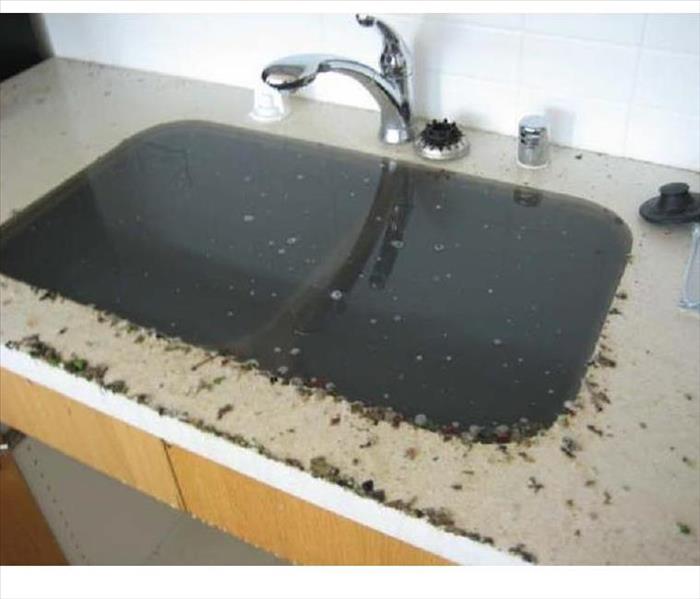 Cat 3 Black Water
Cat 3 Black Water
Not All Water Damage Is Treated The Same
To most homeowners in Lincoln, NE, water damage is all the same. It is a nightmare situation that disrupts daily routines and makes life rather difficult. It is destructive, cruel, and costly to put right. Whether the flooding is from a burst pipe or a blocked drain, it’s all the same right?
Well, in reality, there are some crucial distinctions to be made.
The information below explains the main types of water damage and could help you identify the problem quickly if it ever happens to you.
Category One: Clear Water
This water is the cleanest, most non-toxic form of water damage. It is potable water, perhaps directly from the tap. It is unlikely to cause you any harm, even if you are exposed for some time. Nevertheless, even clean flooding can lead to electrical and structural faults, so it is safer you to call in the experts for repairs. Clean water comes from things like a broken water supply line, tub or sink overflow with no contaminants, appliance malfunctions involving water-supply lines to name a few. However, once clean water leaves the exit point, it might not remain clean after contacting other surfaces or materials. Although it is considered the "safest" of the categories, it can degrade to category 2 or 3 if left untreated.
Category Two: Gray Water
Gray water damage is a little bit more serious and requires a speedier removal process. This is because it may contain potentially unsafe levels of chemicals, microorganisms, or dirt. Examples of Cat 2 water include, but are not limited to: overflow from dishwashers or washing machines; overflows from toilet bowls with urine; seepage due to hydrostatic pressure and broken aquariums.
If left untreated, it can quickly degrade into category 3.
Category Three: Black Water
Cat 3 water is grossly contaminated and can contain pathogenic, toxigenic or other harmful agents. Cat 3 water can include, but are not limited to: sewage; toilet backflows from beyond the trap; flooding from seawater, rivers or streams, ground surface water or other contaminated water entering the indoor environment.
It is important to use experts like those at SERVPRO Lincoln East who are very skilled in the safe handling of black water and will use breathing filtration apparatus and protective clothing to eliminate the risk of sickness. They will also contain the affected area so that no dangerous materials are allowed to escape during the restoration process.
Knowing what type of water is damaging your property or where it is coming from helps restoration experts to approach the situation in a safe way. Please contact your local experts at SERVPRO Lincoln for immediate action. 402-466-4004
Flood Damage from Frozen Pipes and Plumbing
11/2/2016 (Permalink)
Not Yet Winter in Lincoln, But Burst Water Pipes Lead to Flooding in Your Home
Busted water pipes make up nearly half of all in-home flood damage. This type of flooding is sudden and often due to hidden leaks, corrosion, or freezing. The cost and inconvenience of a busted pipe make it essential to start prevention while you still can. Flood damage in Lincoln can happen during any season. While most homeowners associate flooding with warmer weather, many of you know that the winter is a dangerous time for in-home floods as well. SERVPRO of Lincoln is well prepared to help you with your emergency during winter months as well as all other seasons.
Busted Pipes: Winter Prevention
The freezing of a water pipe makes it burst due to the stress it puts on the metal or plastic. To reduce the chance of suffering a busted pipe, you can take a few simple steps.
- First, it is crucial to know where to shut off the water. Now. If a pipe bursts in your home, the most immediate course of action is to turn off that main water supply. Most can be found inside, usually in the basement.
- Second, make sure that your heating system is checked regularly. Also, inspect the insulation on all of your plumbing as well as your cold water tank. Units located in the attic and other vulnerable locations should be protected with insulated sleeves.
- During severe cold snaps, open cabinets where pipes are located so warm air can circulate.
- Third, keep your heat on throughout the winter months. We know that winter can make heating your home costly, but during harsh, cold months, the chances of your pipes freezing get greater as the temperature plummets.
- Finally, make sure you shut off any external taps and disconnect water hoses outside.
What to Do if You Find a Frozen Pipe
If you see that one of your pipes are frozen, don’t wait around for it to burst or “thaw.” It won’t. What you need to do is immediately turn your water supply off to your home and slowly thaw the frozen pipe by applying a gentle, low heat to the area. You can use a hairdryer, hot water bottle, or even a space heater to accomplish this (never leave a space heater unattended). Never attempt to thaw a frozen pipe by using an open flame or other dangerous methods.
Contact Us
If you have run into an unfortunate flooding event due to frozen water pipes, we will take your call and help to minimize your anxiety. Our Emergency Services line means you can call us 24/7 when disaster strikes.
Contact SERVPRO of Lincoln at (402)466-4004
Be Careful Turning on the Water!
3/10/2016 (Permalink)
Do you have a frozen sillcock?
The weather forecast is calling for much warmer days. Spring is on the horizon! Clean the gutters! Hook up the hose and wash the car! But wait; if you turn on the spigot and notice that there is not as much pressure in the hose as you remember, you might have a frozen sillcock. Immediately turn off the faucet and go to where the water comes out of the house. In most cases, this is your basement. Check to see if the ceiling, wall or floor is wet. If so, you may have a frozen sillcock. Investigate quickly in order to avoid significant damage to your home.
How does a frozen sillcock happen?
As shown in the picture below, the tube between the spigot on the outside of your house and the water shut-off valve still has water in it when the temperature outside drops below freezing. This causes the water to freeze and crack the tube. Because the crack in the tube is after the water shut-off valve, there is no water running through the tube until you use the outside spigot in the spring.
What can cause a frozen sillcock?
- Not removing garden hose before cold weather sets in
Improper installation (angle of the sillcock)
Slow drips creating a frozen sillcock
Shifting of the house/foundation
Signs that you have a frozen sillcock
- Low pressure in garden hose
Visibly wet ceiling, walls, and/or floor
How to avoid frozen sillcocks
In the spring, keep in mind that although the daytime temperature is warm, the nighttime temperature can still dip to freezing or below. When finished with daytime use, disconnect all hoses from house until the last freeze has occurred. In the fall before cold weather sets in, be sure to take the basic precautions to protect sillcocks from freezing: disconnect any garden hoses, close indoor shutoff valves if available, and open sillcocks to drain any trapped water. You can also invest in frost free sillcocks. These special frost proof sillcocks are designed to withstand colder weather, essentially by having a water shut-off valve inside your house. This helps to prevent any water left in the outer portion of the sillcock from freezing.
Beware! Frozen Pipes will Burst!
12/10/2015 (Permalink)
Beware the unexpected cold snap or deep freeze! Frozen water pipes are a serious risk during very cold winter weather. When water freezes in a pipe it expands and can exert pressure over 2,000 pounds per square inch. This pressure is enough to rupture most any pipe filled with water which provides no place for the ice to expand. When the pipe bursts, it will spill several hundred gallons of water per hour, and that equates to thousands of dollars of damage to your home. Pipes are most susceptible to freezing when located:
- In an outside wall
- Under a sink on an outside wall
- In an unheated crawlspace
Frozen But Not Burst? Then It's Time to Thaw! Pipe Thawing PreparationWhen pipes are frozen turning on the faucet may yield no water, or it will flow out in a trickle. As soon as you realize a pipe is frozen, you need to take immediate action. - Shut off the water to the faucet locally or at the water main.
- Open the faucet that is supplied by the frozen pipe even if you do not yet know where it is frozen.
- Identify the frozen water supply pipe and find the location of the blockage
- Follow the pipe back from the faucet to where it runs through cold areas such as an exterior wall, unheated crawl space or in some cases an unheated basement if the pipe is near an outside wall.
- Often the frozen area of the pipe will be frosted or have ice on it. If the situation is getting critical, the pipe may be slightly bulged or look slightly fissured.
- When you find that the frozen (but yet un-burst) pipe serving the faucet is behind a wall or ceiling, you've got a challenge on your hands. You have three choices:
1. Turn up the heat in the house and wait. 2. Tear out the wall or ceiling section to get at the frozen pipe. 3. Use an infrared lamp to heat the wall section in front of the pipe. Techniques for Thawing an Exposed Frozen Pipe- Hair Dryer
- Heat Lamp
- Small Portable Heater
- Electric Pipe Heat Tape
Preventing Frozen Pipes
- Leave the faucet drip slightly as a trickle. The dripping water will keep the water in the pipe from freezing.
- Open kitchen base cabinet and let room air circulate.
- Open kitchen base cabinet and place a small portable heater near or in it to heat the pipes
- Wrap the problem pipe with electrical heat tape.
- Insulate the problem pipes with foam insulation wrap, especially those that run through unheated spaces.
- Temper the currently unheated crawlspace by placing a heater in the crawlspace. You just need to elevate the crawlspace temperature to modestly above freezing, about 40°F.





 24/7 Emergency Service
24/7 Emergency Service

